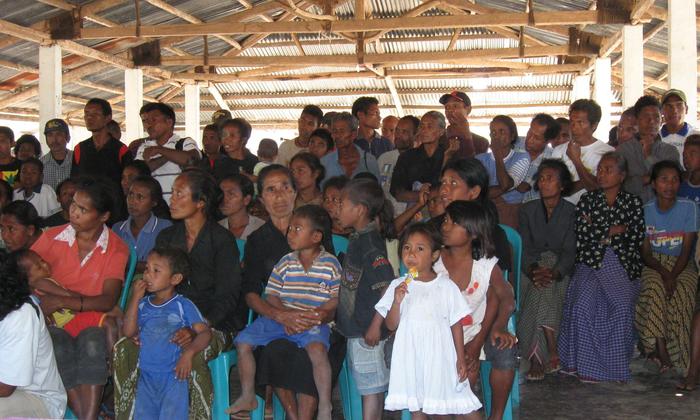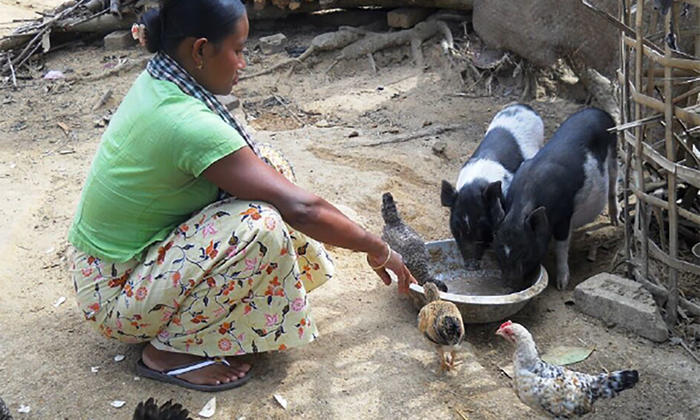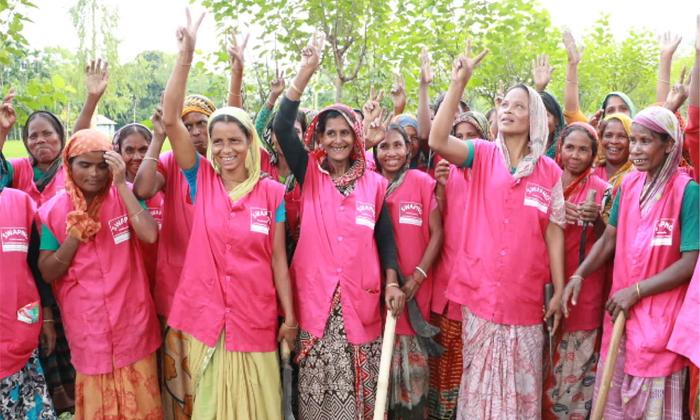The programme strengthened the production abilities, economic access and food consumption of 3,946 families in both physical and social vulnerability in 44 communities in Totonicapán
Case study
Partnerships to combat malnutrition in Guatemala

SDGs ADDRESSED
This case study is based on lessons from the joint programme, Alliances to improve the situation of children, food security and nutrition in Guatemala
Read more
Chapters
Project Partners





1. SUMMARY
The object of the intervention was to promote and improve partnerships in Guatemala to 1) combat malnutrition, especially in those under 5 years old and pregnant and breastfeeding women, and 2) to strengthen the institutional abilities in the area, through national policies on food security and nutrition. The programme also found people to be coordinators, to establish quality strategies in health services and good food practices, by re-evaluating local food cultures. The strategy took place across three levels:
- On a community level, both rural and indigenous, improving the production of food for consumption and commercialization was worked towards in order to promote good food practices and healthy environments by contributing to gender equality.
- On a municipal level, improving the requests and the health and nutrition services offered.
- On a national level, the focus was strengthening institutional capacity and coordination.
Among other priorities, the need to capitalize on economic incentives was stressed, by linking small manufacturers with governmental programmes and establishing the Observatory for Early Warnings in Food and Nutritional Security. In addition, the programme contributed to the strengthening of governmental institutions tasked with rural and integral development processes. In the health sector, support was implemented for the Network of Public Health Services in Totonicapán. The care of the maternal-infant group was also strengthened.
The intervention showed results in strengthening production capacity, economic access and food consumption in families in both physical and social vulnerable positions in the eight municipalities in Totonicapán. In total the programme helped 3,946 families, who implemented good food practices. They improved the organization, administration, production and commercial capacity of 18 production organizations, involving 408 women (55 per cent of the total number of members) and 334 men (45 per cent). At least 3,825 families implemented good nutritional food practices and a healthy home. This gave rise to the strengthening of knowledge and abilities of extensive municipal teams, which helped the creation of community promoters on subjects such as healthy homes, ‘mother advisors’, and school teaching gardens.
This case study aims to highlight the lessons learned, the results and practical examples from this experience, in order to reinforce knowledge on food security and programmes.

In Guatemala, half of the population between zero and five years of age suffer from chronic malnutrition
2. THE SITUATION
In Guatemala, half the population of 0-5 year olds suffers from chronic malnutrition, constituting approximately 1.3 million children. This places Guatemala as the country with the highest level of chronic malnutrition in Latin America; and the sixth highest in the world. Of course, the national average for chronic malnutrition (49.8 per cent) hides larger inequalities: the percentage of malnourished indigenous children (65.9 per cent) is even higher than the global average (34 per cent), and is more than double the Latin American average (14 per cent). Totonicapán exceeds even these numbers, with the average of chronic malnutrition in this geographical area being 82.2 per cent, making it the most vulnerable population in the country. Furthermore, Totonicapán is one of the five regions with the highest proportion of poverty. According to data from the National Survey of Living Conditions (ENCOVI) in 2006, 74 per cent of the population in Totonicapán is poor and 20 per cent is extremely poor. The proportion of people with few resources has remained the same in the past few years, even though the proportion of people living in extreme poverty has declined.
The official figures confirm that 97 per cent of Totonicapán’s population is indigenous, with an illiteracy rate of 81.5 per cent, and an average of just 3.3 years schooling for men and 2.7 years for women. The indigenous rural population continues to be an excluded group in all areas, including access to basic services, land ownership, access to justice, and participation in decision making entities and processes. In addition, it is the group with the most vulnerability in terms of food, explained by its disadvantaged employment conditions and its limited production capacity, along with natural disaster risk factors which have impeded food production.
The Guatemalan government urgently declared the prevention of chronic malnutrition and put the National Strategy for the Reduction of Chronic Malnutrition (ENRDC) into place, with the objective of reducing its prevalence in children below five years old on a national level. This strategy demonstrates the governmental endeavour to confront the causes of food and nutritional insecurity in a coordinated and comprehensive manner.
The programme was implemented in an area which presented a history of triple exclusion: 1) a mainly-indigenous population, 2) with a high rate of vulnerability among children under the age of 3 and women of reproductive age, and 3) who live in conditions of extreme poverty.

3. STRATEGY
The programme applied a comprehensive intervention strategy to respond to the multiple causes of chronic malnutrition. The actions undertaken aligned with the National Strategy for the Reduction of Chronic Malnutrition and with Guatemala’s ‘Zero Hunger’ pact. The intervention focused on three levels:
- In the field of productivity and improving the economy and household consumption, increasing the production of manufacturing, by diversifying products and facilitating access to food, as well as for boosting production for revenue-generating purposes. The Ministry of Agriculture, Livestock and Food, as a governing body and coordinator of the National System of Extended Agricultural Coverage, led the productive component, technically supported by the FAO. On the food nutrition education side, they worked with local key players, from families, teachers, agricultural promoters and mother advisors, to organizations, health commissions and local delegations from State institutions. The programme awarded leadership to the Public Health and Social Welfare Ministry and the Ministry of Education to develop the healthy schools strategy and the school teaching gardens, with technical support from WHO and the FAO.
- In the field of health services, the programme sought to improve the coverage of children under 3 years of age and women of reproductive age with regards to prenatal care, food and nutritional education, breastfeeding, and supplementary feeding. The leadership was awarded to the Public Health and Social Welfare Ministry, with technical support from WHO.
- In the field of institutional and community organization strengthening, it was decided to work with the System of Development Councils, the municipal and community authorities and the organized groups from civil society to improve their technical abilities in planning and identifying action to counter chronic malnutrition. The leadership was the Secretary for Food and Nutritional Security, which was accompanied by technical support from WHO. Similarly, it sought to strengthen community organization, with community outreach workers and mother advisors to assure a network of labour forces empowered in agricultural aspects and counselling tools to facilitate continuity in the processes that have been started.
The population of Totonicap·n is mostly indigenous and has an illiteracy rate of 81.5%
In terms of the territorial intervention area, the actions were focused in 44 selected communities in the eight municipalities that comprise Totonicapán. This department was selected in agreement with the Food and Nutritional Security Secretary (SESAN) by analysing the results of the Third National Census measuring the Height of First-Grade Primary School Children in Guatemala’s Public Education System. This showed that Totonicapán is the region with the highest prevalence of chronic malnutrition in relation to the national average, with 69.4 per cent (7 out of every 10 children), and being higher in girls (70.9 per cent) than in boys (67.9 per cent).
4. RESULTS AND IMPACT
The programme strengthened the production abilities, economic access and food consumption of 3,946 families in both physical and social vulnerability in 44 communities in Totonicapán.
Totonicapán is a region with a strong organizational culture. The intervention was rooted in a pre-existing organization in each community and developed strategies that contributed to the participation of civil society and the authorities at a community and municipal level. Space for greater female participation was generated, given that they have a determining role in the reduction of chronic malnutrition. In this particular case the participation of the Women’s Municipal Office was very important. Furthermore, groups and organizations - particularly indigenous and women’s ones - were strengthened, tasked with organizing food and nutritional security in the framework of the National Strategy for the Reduction of Chronic Malnutrition (ENRDC). At the end of the intervention, 339 leaders (283 women and 56 men) educated by the programme held executive positions in these organizations. At the same time, a community structure linked to the agricultural extension system, consisting of 270 trained promoters and with the ability to follow up on the activities of food production for families’ consumption.
For improving the practices used to produce nutritious food for consumption, 3,825 families received inputs for the production of food and implemented good production and storage practices. Municipal extension teams from the Ministry of Agriculture, Livestock and Food were in charge of training activities, with technical and methodological help from the programme. The process took place through ‘learning-by-doing’ and ‘Farmer to Farmer’ methodologies, creating 12 meetings, 16 ‘exchange of experience’ tours, 2,716 training workshops on various themes and a departmental meeting with promoters. Also, 36 plots of land for experimentation were established, achieving the promotion of 36 other agricultural practices that diversified production. For the transfer of knowledge, 139 Teaching and Learning Centres (CEA) were founded. Furthermore, the Strategy for Community Education was successfully implemented through a Network of Mother Advisors in 42 communities within the eight municipalities. This network was formed and strengthened by the community teachers on the programme in the training and follow-up meetings. By the end of the programme, 4,108 women had participated in 23 groups lead by a mother advisor.
The Healthy Schools initiative involved practices to promote healthy living in the community. These included training processes for 5,979 schools, 230 teachers, and 71 per cent of fathers and mothers, who received information and training on health and nutrition. Teaching materials were developed and made available in the 40 schools. In addition, the school infrastructure was improved with a 2 million dollar complementary investment from the TIGO Foundation.
The organized family groups also developed productive agricultural projects and commercialized the surplus, thereby increasing their income. 18 business ventures in the Santa Lucia la Reforma, Momostenango, San Cristóbal Totonicapán and Totonicapán municipalities were selected. Their production activities consisted of the production of vegetables in open fields (green beans and Chinese peas for export), tomatoes in greenhouses, edible mushrooms, the production and processing of medicinal plants and the craft processing of fruits and vegetables (agribusiness). These 18 organizations integrated 742 producers (408 women and 334 men, representing 55 per cent and 45 per cent respectively).
In relation to the actions to support the network of health services, the care of the mother-child group was strengthened in the three levels of care. 27 health posts in the first level, 9 permanent care centres and a comprehensive mother-child care centre in the second level, and at the third level there was the creation of a national hospital. In addition, the main health activities included: the education of staff in care standards for the first and second levels (330 people); the funding of input and equipment in health services across the three levels of care; and the support in implementing the nominal register for the Health Management System, along with the development of tools for analysing information. Also, 90 per cent of the children of participating families in the programme were given more meat and nutritional care.
The program worked to increase the production of self-consumption, diversifying products and facilitating access to food
5. CHALLENGES
- Even though the participation of different United Nations agencies proved to be a very efficient multidimensional methodology in terms of the results, the increased number of participating agencies in this intervention led to incompatibilities and communication problems. This brought to light the need to design programmes with fewer agencies (three or four maximum) and to create an administrative schedule all together which defines shared channels and procedures to reduce costs and lead to greater efficiency. From the start, the programmes must rely on a well-defined communication strategy which allows all parties to transmit an understanding of it, away from isolated promotional events.
- The programme was designed to use the coordination and management mechanisms of national and local structures in the most operative areas. Of course, it is necessary for the programme to define effective mechanisms for demanding the fulfilment of obligations undertaken by each of the agencies to guarantee success.
- The high rotation of staff that occurred with the change of government at the beginning of the implementation posed a challenge for the continuity of activities and the strengthening of the processes initiated at a local level.
- The community empowerment process for decision-making presented limiting factors such as the families’ lack of confidence towards the Executive Board.
- The cultural habits, practices and customs of the population require a prolonged process to achieve a change in behaviour to work towards better health and nutrition.
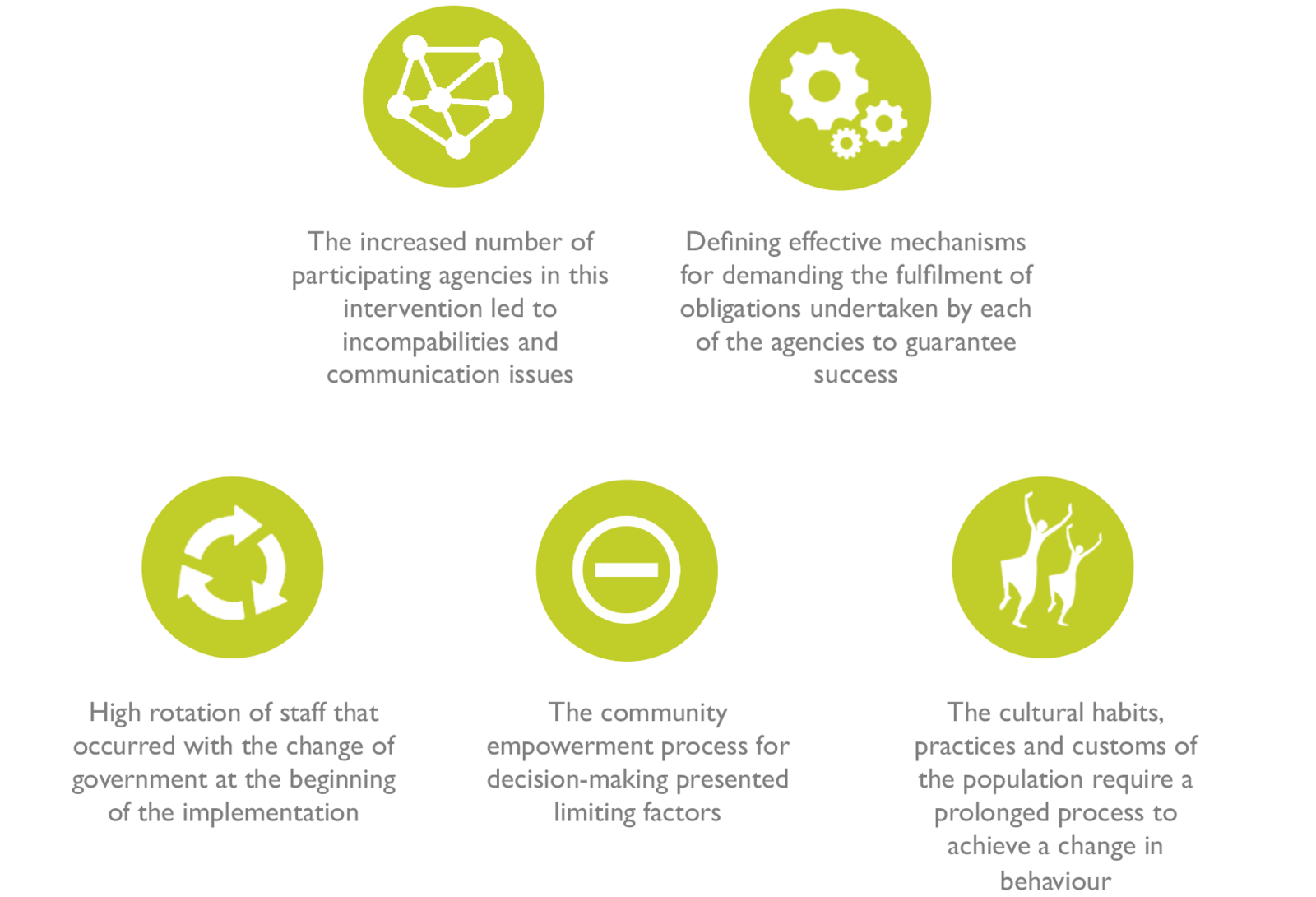
6. LESSONS LEARNED
- The programme is a successful reference of the abilities and the impact of the United Nations when its agencies work in a coordinated and multidimensional manner. Every one brought its own knowledge and experience. Of course, in order for the intervention to be successful, it is very important that clear roles are assigned and agreements established about communal objectives, followed by mutual learning by the connected agencies and institutions.
- Conducting an initial diagnostic before the intervention is vital to understanding the strengths, weaknesses, threats and opportunities that offer a national context in terms of constructing institutionalism in food and nutrition security. Correct information is key for the expansion of public policies and taking appropriate decisions.
- The coordination of various players requires an inclusive, participative leadership with clear objectives. When staff are selected to fill positions, these characteristics should be taken into account. The leadership style which drives the process is diffused across the rest of the team.
- The involvement and awareness of all the parties involved was key to gaining support and alliances with municipalities. It is important to respect and adequately plan the different processes and timings of each part to avoid activity overload.
- One of the best impacts of the intervention was that of facilitating alliances between diverse players, especially on a municipal level, and this certainly led to better results. The efficiency of a care model for chronic malnutrition involves a multidimensional approach and articulated and coordinated action between the ministries and other players who overlap in the same area. For this to happen, it is necessary to rely on coordination spaces at central, departmental and municipal levels, which contribute to breaking down the paradigms of isolated work.
- The structures created by the programme, such as the technical committee at the national level and the management committee at the departmental level, favoured dialogue, communication, and the exchange of information, which finally translated into consensual and joint plans for work. This aspect is fundamental because it boosts the effects of correctly timing the actions of multiple parties, efficiently filling gaps and increasing the potential coverage of the interventions.
In relation to Healthy Schools, it was possible for communities to implement health promotion practices
- It is good practice to support pre-existing local structures, without generating new institutional mechanisms. The strengthening of municipalities, developmental advice and the food and nutritional security commissions allowed the reactivation of a viable instrument for coordination, investment and follow-up on actions in the field.
- Visualizing food security commissions as useful management tools for all the participants will help cement its position.
- Given the way that they are structured, they have the potential to function as situational spaces which favour better investment and monitoring of resources. It is a space in which not only the public institutions sit, but also key players from civil society, and therefore it is the appropriate space for continuously mapping all the interventions in the municipality, knowing where the information gaps are, and seeing where there is space for opportunity and synergy. With this will follow more efficient and effective investment of resources.
- One of the main lessons learned was the importance of targeting the action in the most vulnerable communities and families in terms of food and nutritional security. A comprehensive approach with better focalization leads to more positive impact. The prioritization of communities should happen in accordance with appropriate initiators, and the definition of technical and equal criteria. In addition, the actions should happen in an adequate timeframe to boost the effects of comprehensive care, which requires the prioritization of the benefiting family groups, as well as a formalization of agreed selection criteria in the communities themselves. It is also important to improve leadership and community involvement as well as reducing the risk of political and electoral interference, so that determining the criteria and final selection of families happens in an agreed manner, with the participation of local authorities, for community advice for development and representation of municipal town halls.
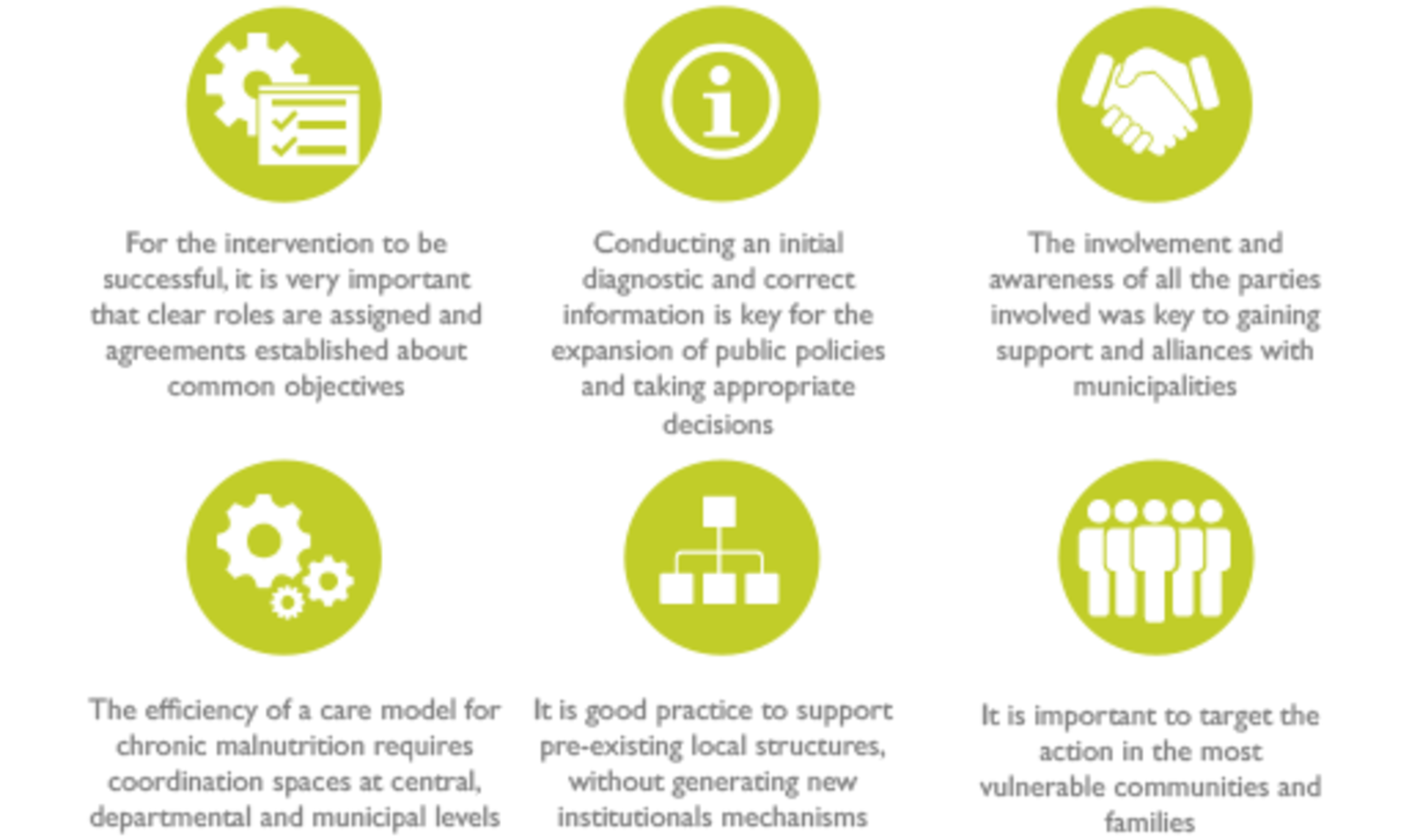
7. SUSTAINABILITY AND POTENTIAL FOR REPLICATION
The promoted practices can be a reference for the rest of the development projects happening in Guatemala, but also for other countries. The sustainability approach applied by the programme was based on generating shared responsibility between the beneficiaries and the local, departmental and national governments. The programme implemented a strategy which had community organization, the formation of coordination and participation spaces, and the transfer of knowledge, methodologies and input as central pillars – for the beneficiaries as well as the institutions in charge of the development of Food and Nutritional Security Policies.
This intervention is especially relevant for community participation and empowerment, especially for indigenous groups. The community organization is one of the components of sustainability of the National Strategy for the Reduction of Chronic Malnutrition. Empowering and including the community is fundamental to ensure greater sustainability of the actions. A formed and aware community structure (Meetings, Management Boards, a network of mother advisors, promoters and education advice) has a better chance of continuing to work together to secure food security. The work experience demonstrated that community players who continued participating in the Municipal Commissions of Food and Nutritional Security are those who were involved in the actions because they have a better overview of the work and they are more aware of the problem. They are conscious, they feel and they live the reality in their daily lives and are sufficiently empowered to continue working on actions in favour of their communities.
In order to ensure continuity and sustainability in the Teaching and Learning Centres, the Management Boards, the municipal networks of promoters, the Ministry of Agriculture, Livestock and Food, through the Extension Teams from each municipality, will continue the training and technical assistance processes.
On an institutional level, the continuity of action will depend as much on the level of leadership and ownership achieved by the institutions as their technical and financial capacities. The level of leadership and institutionalization of the PC’s principal actions has been very high, which guarantees better ownership and more favourable conditions for their continuity. All the processes agreed and aligned with the National Strategy for the Reduction of Chronic Malnutrition (ENRDC) and the Zero Hunger pact. The Ministry of Agriculture, Livestock and Food, the Secretary for Food and Nutritional Security and the Ministry of Public Health and Social Welfare strengthened their institutional structure and maintained technical levels in their budget to give continuity to the actions. Of course, sustainability depends largely on the technical and financial assistance that the local, departmental and central government bodies guarantee, but also on continuity and help from other participants like the system of the United Nations. The United Nations Population Fund (UNFPA) compromised by continuing to offer support in the municipalities prioritized by the PC to the process of community self-management, through the Municipal Women’s Offices and the Community Commissions for Food Security. The programme planted a seed in relation to self-management, but it is important that this be nurtured. Therefore, the municipalities and operative bodies have a great responsibility when it comes to involving their budgets in the accompaniment and development of the content that give life and dynamics to the spaces for dialogue that were generated with the communities and municipalities.

